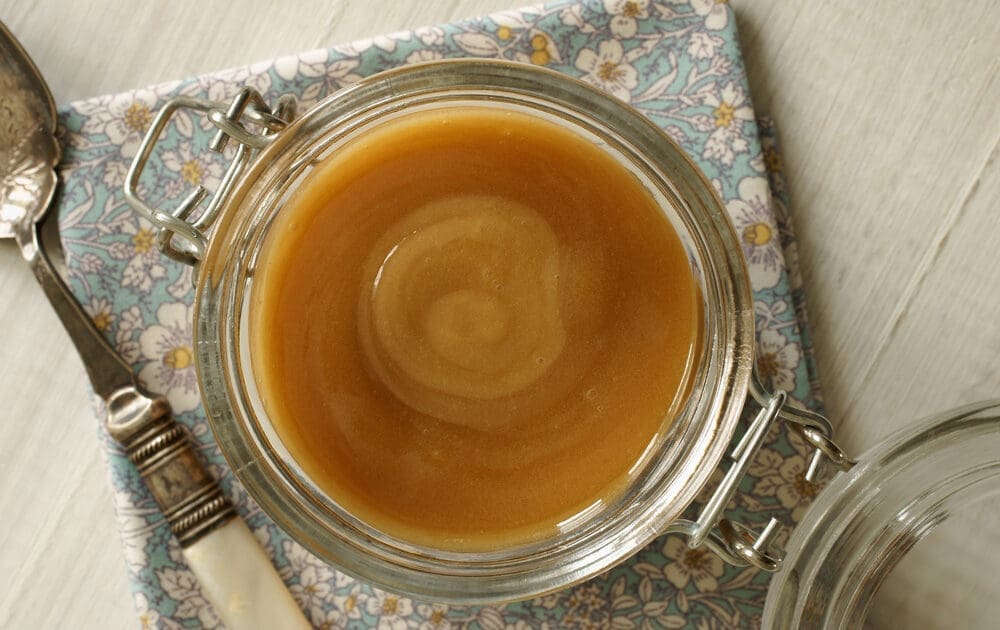Powerful Antibacterial Manuka Honey Benefits to Make You Love Bees Even More

Raw honey is lovely on toast, sweet in tea, and even helpful in certain beauty regimens, but there’s another type worth knowing about if you’re looking for more natural ways to boost your wellness. There have been claims that manuka honey benefits everything from your throat and stomach to your skin and your oral health.
We’ll take a look at how manuka honey differs from other types of honey and why you should start using it to treat certain conditions and shake up your diet a little bit.
What Is Manuka Honey and What Makes It Special?
Manuka honey comes from New Zealand and is made by bees that pollinate the flowers of the manuka bush. These flowers bloom just once a year, lasting for 2 to 6 weeks.
Most types of honey have antibacterial properties because of their enzymatic production of hydrogen peroxide, but research has shown that manuka honey keeps on working even when the activity of hydrogen peroxide is blocked. This is partly what makes it so unique.
Manuka honey also contains methylglyoxal — an antibacterial compound that results from highly concentrated amounts of another compound called dihydroxyacetone present in the bush’s nectar. Other types of honey also have the antibacterial-boosting methylglyoxal compound, but in smaller quantities compared to manuka honey.
Nutritional Benefits of Manuka Honey
Like most types of honey, manuka honey is mostly just sugar. One tablespoon is about 60 calories and 17 grams of carbohydrates.
“Manuka Honey is packed with a rich source of multiple vitamins, including Calcium, Iron and Zinc,” says Dr. Mona Gohara, MD. “It’s also a natural antibiotic due to its high level of enzymes.”
Manuka honey is great if you’re in need of a fast energy boost. Fructose and glucose are your body’s main source of energy, so a natural, nutrient-dense source like manuka honey might be a better choice compared to processed sugar. Just make sure to limit your consumption to 1 or 2 tablespoons in order to avoid going overboard with calories.
Common Conditions Manuka Honey Can Treat
Manuka honey is mainly used to treat minor wounds and burns, which may help speed up healing time compared to using traditional dressings. “This is due to the hydrogen peroxide within the honey, which helps stimulate cell repair and growth,” says Dr. Gohara. “Manuka honey is also a natural moisturizer, as it absorbs moisture directly from the air and draws it into the skin, holding it in.”
Any minor condition that involves an overgrowth of bacteria may be ideal to treat using manuka honey. One particular study found that that manuka honey significantly reduced plaque and gingivitis. There’s some evidence that manuka honey and even other types of honey can be used to treat conditions like acne, eczema, eye infections and sinus infections, but more research is needed to know for sure
If you suffer from an upset stomach, acid reflux, IBS, or any other GI problems, manuka honey may help. “Manuka honey can tackle Helicobacter pylori (H. pylori), the bad bacteria that causes a lot of GI illnesses,” says Rebecca Lee, RN. “Honey with high levels of MG can fight against hospital drug resistant bacteria such as E. Coli and MRSA.”
There’s a possibility that manuka honey could be used to treat high cholesterol, but studies have not yet proved this to be true. There’s also no scientific data available to prove whether manuka honey is effective at balancing gastrointestinal bacteria or aiding in treatment of more serious conditions like diabetes and cancer, so despite claims, be aware that we still need the facts.
Buying Manuka Honey
To help inform people of manuka honey’s concentration of methylglyoxal, which may differ depending on what kind you get, manuka honey producers use the Unique Manuka Factor (UMF) scale. The higher the rating on the scale, the higher the concentration of of methylglyoxal a particular type of manuka honey has. According to WebMD, manuka honey has to be rated at a minimum of 10 for its potency to be considered powerful enough that it can be used for health treatment purposes.
Always look for the UMF trademark on its label to ensure that it’s genuine manuka honey, which will have the rating on it as well. You should also be able to find information about the company, including its license number and New Zealand location. Anything without a UMF rating is not genuine manuka honey.
How to Use Manuka Honey
For minor burns, the Mayo Clinic recommends applying 15 to 30 millilitres of manuka honey to the skin once every 1 to 2 days and covering with gauze or a bandage. Some gauze products you can find at your local drugstore also come pre-saturated with manuka honey.
Or if you don’t currently have a specific condition that manuka honey can help with, you can always use it in a DIY face cream or moisturizer to naturally improve the look of your skin. And for more benefits that go beyond the surface of your skin, you can add a tablespoon or two to your favorite herbal tea, yogurt with fruit, smoothies, or anything else that could use a boost of sweetness.
Side Effects of Using Manuka Honey
Manuka honey is mostly safe, especially if you’ve used other type of honey before, but be aware that some people who are allergic to bees may experience reactions. In addition, be mindful of the fact that since manuka honey is really just natural sugar, larger quantities can cause blood sugar spikes.
If you want to use honey more often for therapeutic purposes, then manuka honey may just be the type you really need to see better results. It’s much pricier, but it may also be worth it!
Related on Organic Authority
The Health Benefits of Honey: What You Need to Know Before You Buy
7 Vegan Honey Alternatives Just as Sweet
Image of manuka honey via Shutterstock

